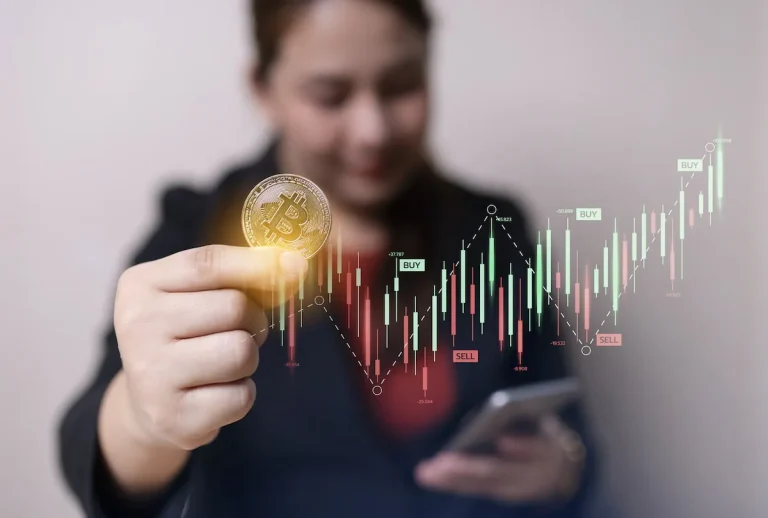Content
These algorithms can affect stock prices and market volatility, creating ripples that eventually touch our portfolios. Algorithmic trading is an investment strategy that often resembles a 100-meter dash more than The Fool’s usual approach of steady long-term ownership of top-shelf quality companies. But even though you might not plan on lacing up for an algorithmic trading sprint, understanding Non-fungible token it is key in the modern world of investing. After all, large portions of today’s stock market rely directly on this tool.
Best AI Trading Systems, Software & Bots for Stocks in 2025
However, the hard part is putting in enough work to understand the algo, or in building an algo for trading. Also, while an algo-based strategy may perform well on paper or in simulations, there’s no guarantee it’ll actually work in actual trading. Traders may create a seemingly perfect model that works https://www.xcritical.com/ for past market conditions but fails in the current market.
How Does Algorithmic Trading Work?
They over-optimize their strategies and subsequently curve fit their strategy to past history, meaning it’s not a strategy that will work live. This issue was related to Knight’s installation of trading software and resulted in Knight sending numerous erroneous orders in NYSE-listed securities into the market. Clients were not negatively affected by the erroneous orders, and the software issue was limited to spot algo trading the routing of certain listed stocks to NYSE. Knight has traded out of its entire erroneous trade position, which has resulted in a realized pre-tax loss of approximately $440 million.
Can You Make Money With Algorithmic Trading?
So, how do we write a step by step set of instructions to solve a market glitch?. Algo trading is an evolving concept which is already in place at the stock market companies. Let’s have a quick look on what is algorithmic trading and what does it do in resolving financial issues. At times, algorithmic trading is blamed for market turbulence, like sudden “flash crashes.” While these events are rare, they highlight the importance of proper risk controls. As a new algo-trader, you won’t likely be causing major market swings, but staying informed about rules and ethics ensures you are trading responsibly. Many profitable strategies do not need machine learning or AI—just clear rules and careful execution.
What are the algorithms used in algorithmic trading?

Thoroughly backtest your model and keep a close eye on it during the initial phase. While they can be lucrative, algos possess substantial risk that needs to be appreciated. You’ll receive real-time alerts via email or text, all backed by years of research and powerful backtesting. For just $69/month, take advantage of their proven algo-driven stock and option strategies. Regulators have introduced rules to prevent abuses—such as spoofing (placing orders to move prices without intending to execute them) or front-running (trading ahead of known client orders).

It comes with 64GB of RAM and a 1TB solid-state drive to ensure top performance no matter how many algorithms and markets you trade simultaneously. Traders who use this strategy seek to profit from the bid-ask spread (the difference between the buying and selling prices spread of an asset. Unless you’ve already been trading for a while, it’s a good idea to start by learning the fundamentals of financial markets. While there are tools and platforms that can speed up your algo trading journey, getting started still requires a hefty dose of self-study and preparation. Thanks to a host of trading tools and platforms, many of the rigorous mathematical algorithms are pre-coded, allowing you to use them as you see fit. More fully automated markets such as NASDAQ, Direct Edge and BATS (formerly an acronym for Better Alternative Trading System) in the US, have gained market share from less automated markets such as the NYSE.
You can test 100 technical indicators to discover which ones should have a place in your algorithm and then compare how they perform against the SPY’s benchmark performance. Additionally, TrendSpider provides you with automated technical analysis and pattern recognition capabilities to help you tease out even more profitable ideas from the market. It provides a wide range of features that help you generate trading ideas and consistently develop new strategies with the tool’s powerful scanning software. Once you’ve done the hard work of developing your strategy and testing it in a simulation environment, it’s time to graduate to trading with real capital on the line. While it’s tempting to skip this step once you’ve found a profitable strategy, it could save you thousands of dollars if you decide to live trade an algo with undiscovered bugs. The programming language offers thousands of built-in keywords and functions that are useful to traders, making strategy generation incredibly efficient.
You’ll also find plenty of examples of successful algo traders with a quick Google search. The platform allows you to trade a host of markets from stocks to crypto as well as offering decades of historical market data for backtesting and a range of analysis tools. However, one of TradeStation’s best features is the integration of their proprietary programming language, EasyLanguage. Arbitrage is not simply the act of buying a product in one market and selling it in another for a higher price at some later time. The long and short transactions should ideally occur simultaneously to minimize the exposure to market risk, or the risk that prices may change on one market before both transactions are complete.
A British trader was convicted of using “spoofing” algorithms, which create the illusion of demand to manipulate the market. The programme created a large number of selling orders of E-Mini S&P contracts to artificially push prices down, which led to the market plunge. An individual or, as is predominantly the case, an institutional investor will use automated algorithmic strategies to execute trades. Algorithmic trading’s primary advantage is its ability to execute trades with speed, precision, and efficiency, eliminating human error.
- Today, they may be measured in microseconds or nanoseconds (billionths of a second).
- A popular software is TradeStation, the creators of EasyLanguage, which provides a user-friendly programming language that includes a wide range of built-in technical indicators, strategies and charting tools.
- Founded in 1993, The Motley Fool is a financial services company dedicated to making the world smarter, happier, and richer.
- Many profitable strategies do not need machine learning or AI—just clear rules and careful execution.
- System failures can occur due to technical glitches, software bugs, or hardware malfunctions.
For humans like me, the goal is to run a portfolio (multiple) of strategies automatically while I work on my 9to5 job. For example, TradeStation EasyLanguage is a proprietary programming language created by TradeStation Security for its workstation platform. Our January report reveals the 3 “Strong Buy” stocks that market-beating analysts predict will outperform over the next year. But most importantly, you can analyze vast data sets and backtest strategies, increasing your confidence in the strategies you’ve developed. Keep in mind that these are basic versions of mean reversion strategies and are unlikely to be profitable without some tweaks and personalization. Additionally, you can use TrendSpider to test your strategies without any coding knowledge and then deploy successful strategies into a trading bot with just one click.
This enables traders to react instantly to market changes, capitalize on fleeting opportunities, and reduce the influence of emotional biases that often affect manual trading decisions. Moreover, the ability to process vast amounts of data and execute multiple trades simultaneously provides a significant edge over traditional trading methods. Algorithmic trading, often referred to as “algo trading,” has transformed financial markets by automating and optimizing trade execution. From speed and precision to leveraging data analytics, it offers traders opportunities previously unattainable through manual trading.
Algorithmic trading relies heavily on quantitative analysis or quantitative modeling. As you’ll be investing in the stock market, you’ll need trading knowledge or experience with financial markets. Last, as algorithmic trading often relies on technology and computers, you’ll likely rely on a coding or programming background. Algorithms use real-time data and historical data, such as price feeds, economic indicators and social media sentiment. Orders are automatically executed when the strategy’s conditions are met, usually in milliseconds. Algorithmic strategies are tested on past data to confirm their reliability and performance in different market conditions.
Success in this area is dependent on a thorough understanding of different high-frequency and arbitrage strategies in relation to market dynamics. A common example here is Pepsi and Coke, since both are established players in the same industry. If the price of Coke goes up and Pepsi remains static, a trader would short Coke and go long on Pepsi. The trader was convicted and this kind of market manipulation is now banned to prevent a repeat of May 2010. A general election in the UK and financial issues in the Greek economy negatively affected markets, pushing equity and futures indices downwards. The dramatic evolution trading has undertaken in recent years can’t be overstated.
Arbitrage looks to take advantage of the price difference between the same asset in different markets. Algos can capitalize on this strategy by quickly analyzing data and identifying pricing differences, then quickly execute the buying or selling of those assets to capitalize on the price difference. Instead, the best strategy is the one you are most comfortable with that can generate the highest risk-adjusted returns. For those new to algos, simpler models, like momentum trading, may be the most accessible approach. Of course, algorithmic trading isn’t perfect; it’s not without its challenges.
In short, the changing portfolios help investors get stocks at the right time and the best prices with lower transaction costs. The human brains develop codes to instruct systems to make situation-driven decisions. The mathematical models and algorithms are so created that computerized devices efficiently assess market situations. For example, as per the automated analysis, traders open-close or enter-exit trades.

